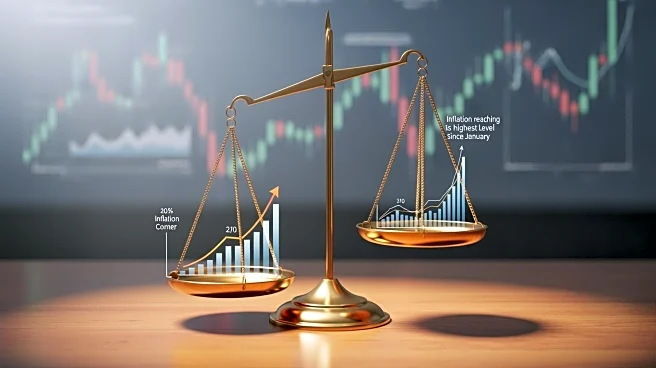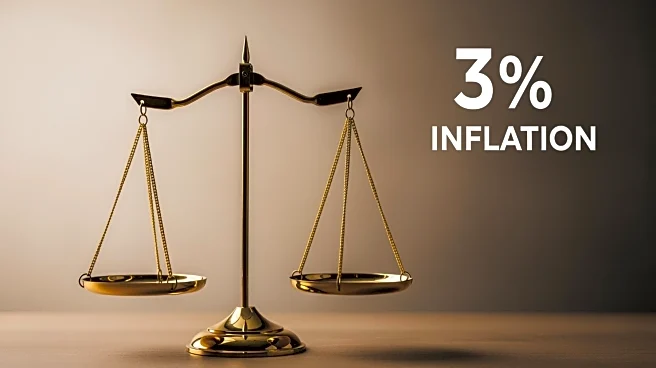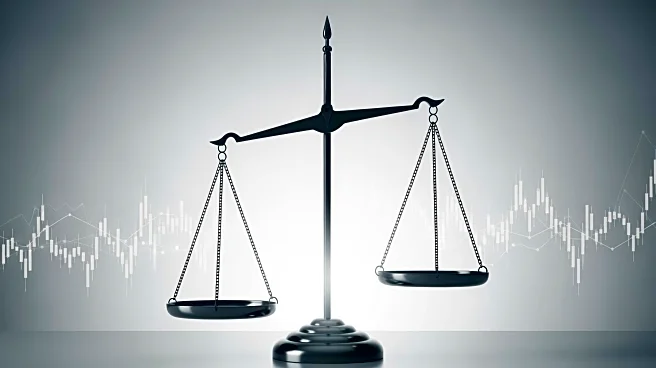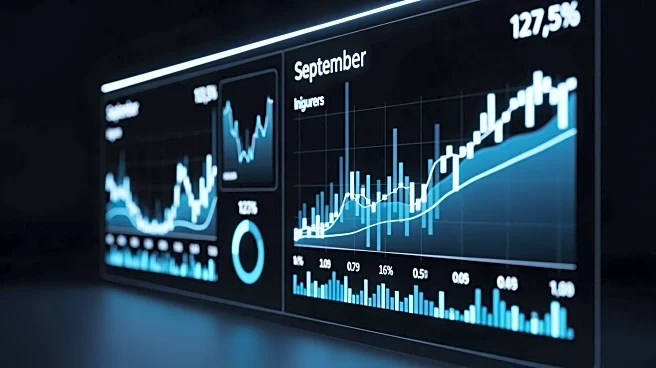What's Happening?
U.S. inflation has reached 3% in September, marking the highest level since January. The increase is attributed to rising prices in sectors such as beef, which saw a nearly 15% increase over the year. President Trump's tariff policies have contributed
to the inflationary pressures, with recent data showing a slowdown in hiring. The Federal Reserve faces a challenging economic environment as it balances interest rate decisions amid these conditions.
Why It's Important?
The rise in inflation poses risks to the U.S. economy, affecting consumer purchasing power and economic stability. The Federal Reserve's response to these pressures will be crucial in managing inflation without triggering a recession. The situation highlights the impact of trade policies on domestic prices and the broader economy, influencing decisions by businesses and policymakers.
What's Next?
The Federal Reserve is expected to consider an interest rate cut in response to the inflation data, with potential implications for economic growth and consumer spending. Ongoing discussions about trade policies and their impact on inflation will continue, with possible adjustments to address economic pressures. The situation will be closely monitored by economic stakeholders and policymakers.













